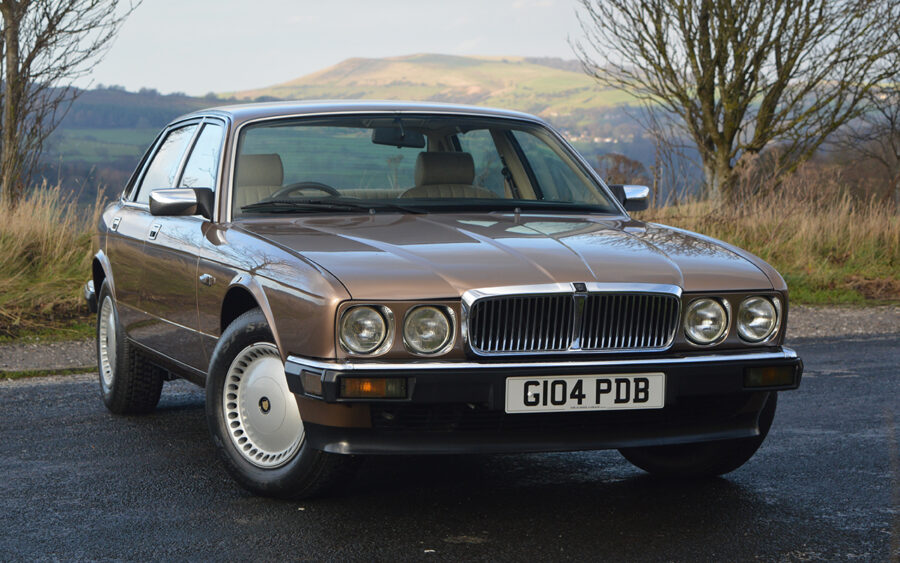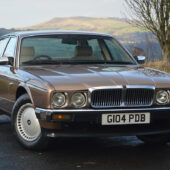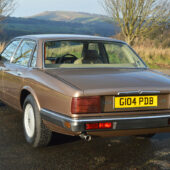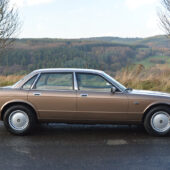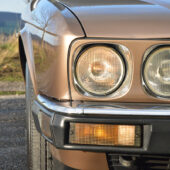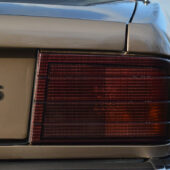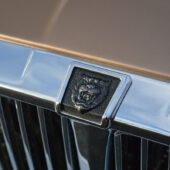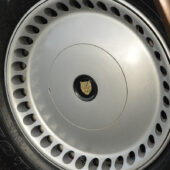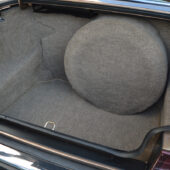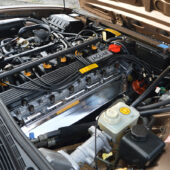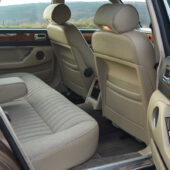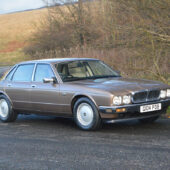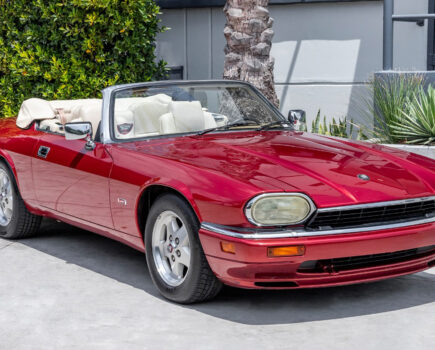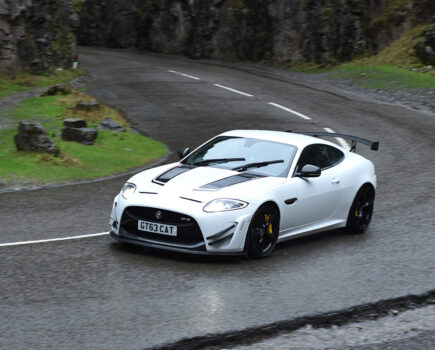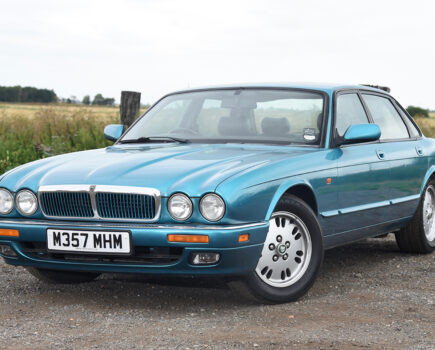The Jaguar XJ40 is still an underappreciated classic that’s much more affordable than its older siblings. Here’s how to buy a great one
Words: Paul Wager
A relatively common sight until only recently, the XJ40 is now firmly in the enthusiast category, with survivors now cherished modern classics rather than tatty daily runners.
The car itself was a massively significant one for Jaguar, taking it from the Lyons era into a very different future, one which saw it ultimately competing directly with the might of the German prestige marques and largely banishing the quality demons which had always bedevilled the company.
Despite this, the XJ40 remains a more affordable proposition than the Series 3 XJ which it replaced, while its ’80s style is gradually becoming regarded as classic in its own right. It’s also an easier car to live with in many ways, with a very much more modern driving experience than the Series 3 which can often be disappointing unless major effort and expense has been invested in getting it just right.
Growing interest has already seen values of top condition XJ40s rising, so if you fancy one of these significant Jaguars then now’s the time to strike. Here’s what you need to know.

Bodywork
The XJ40 may be newer than the classic XJ but by any definition these are old cars now and it’s only the unusually pampered ones which will have escaped corrosion entirely.
In most cases the cars left on the road have been well cared for in recent years, so you can expect minor issues like bubbling around wheelarches and panel edges – the sort of thing which can be sorted relatively easily as part of a tidying-up without major surgery. If it’s more serious, repair panels are available for most of the common areas, although complete genuine front wings are unavailable new and good used ones can be costly.
As with so many cars from this era though, even tidy-looking cars can be hiding structural corrosion in the bulkhead area, so use a torch to check under the dash as much as possible and from the engine bay.
Wet soundproofing behind the dashboard and damp footwells can also be a giveaway, although this can also be caused by a poorly sealed windscreen.
While you’re in the area, inspect front and rear scuttles and screen surrounds for rot, a common Jaguar issue which can be tricky to repair neatly.
Rotten sills should be obvious and will also appear on the car’s MoT history, while a look underneath will tell you how solid the ‘chassis’ rails and floor panels are. Again, repair panel are available for the common areas.
Less significantly, give the bumpers a tug to find out whether they’re securely mounted, as the brackets can corrode. Check the drains for both sunroof and the fuel filler aperture are clear.

Engine and transmission
All six-pot XJ40s used the AJ6 engine, which is well regarded for its reliability if properly maintained and kept full of oil and water. Head gasket failure isn’t unknown, especially when owners haven’t used the proper concentration of coolant, but even if the job is handed to a specialist workshop the cost of replacement isn’t outrageous. With the head off, it can be worth having the valve stem seals replaced, since they can harden with age and cause smoking on the overrun.
The camshaft covers often tend to weep oil on the 3.6 and 4.0, but are simple and cheap to replace. A noisy cam chain can be caused by the slipper pads coming away from the tensioner.
The V12 is a different proposition, not because it’s inherently troublesome but because it’s simply so complex and access is so tight that routine servicing is often skimped. This in turn can cause further issues: for example, the spark plugs can seize into the heads if left too long between changes and can then strip the threads. A noisy cam chain can mean problems with the tensioner which is an expensive labour-intensive job.
Clearly then, when buying a V12 you want to see evidence of regular maintenance and not just a collection of dog-eared receipts for oil and filter.
Six-cylinder XJ40s were offered with a choice of four-speed ZF automatic or five-speed Getrag manual, although naturally the automatic is the more common. There’s a gearbox dipstick to check the oil (with the engine running) and the state of the fluid should give you a clue as to the condition of the gearbox.
The ZF box should take up drive smartly without noticeable delay and should change smoothly without flaring on upshifts. A refusal to select reverse when hot can be a symptom of a sticking valve body and can often be fixed with a fluid change. The GM box fitted to V12 cars is a reliable unit but not the most refined in operation, the three gears meaning progress can be jerky when pressing on.
The combination of big Jaguar and manual box is at once both alluring and slightly odd, but the three-pedal XJ40 is in fact a surprisingly agreeable drive. Any problems with the manual box or clutch should be obvious, although it was a slightly ponderous shift when new.
A droning from under the car could simply be a noisy propshaft bearing which is a straightforward DIY fix.
Leaky rear axles are a common issue and if left too long the oil level will drop and the bearings become noisy as well as the diff, so it’s sensible to keep an eye on the leak and the level.
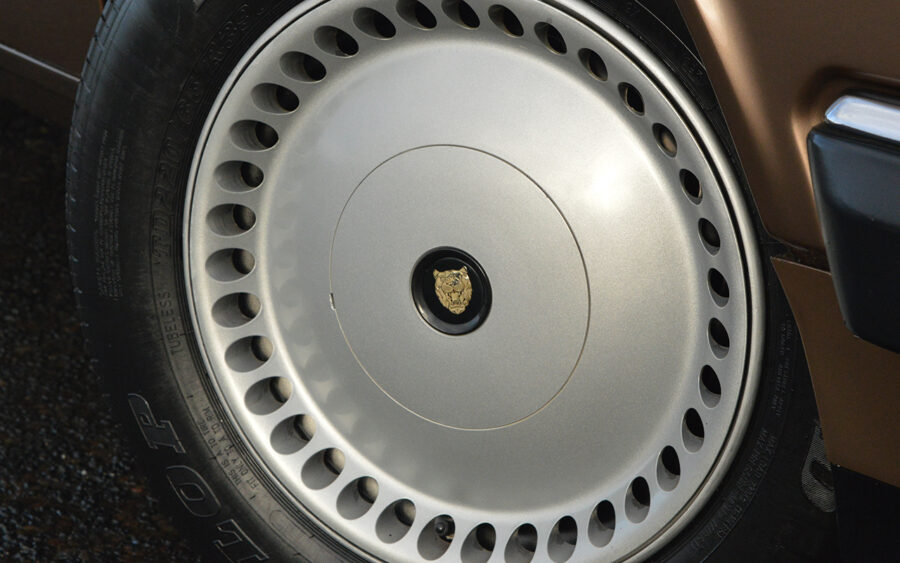
Suspension, steering and brakes
Starting with the basics, assess whether the car sits squarely and if not, look for broken coil springs which are cheap enough to replace, but should be done in axle pairs.
As with the Jaguars which came before and after, the XJ’s underpinnings contain plenty of bushes which tend to age gradually, so that the drop off in handling precision isn’t immediately obvious. If you’re buying one, then do drive a selection to get an idea what they should feel like.
A rattle at the front – often more prominent at lower speeds – can often be caused by the top damper mounting bushes or anti-roll bar drop links which are both cheap to replace. A general feeling of imprecision is more likely to be down to the wishbone bushes at either end, while a loose-feeling front end can be caused by perished subframe mounting bushes.
These V-shaped bushes are sandwiched between the subframe and the bodywork, so with the car on the ground and the weight on them it can be difficult to assess their condition. Replacement is only a DIY job for the well-equipped owner as it requires the weight of the engine to be taken off the subframe.
Similarly, perished subframe bushes at the rear can cause a major drop-off in handling, with any suggestion of rear-steer and general wallowing sensation meaning replacement is due.
Early cars with the self-levelling suspension have mostly been converted to standard springs and dampers by now, but if you do come across a car running the original system then budget for replacement: parts availability isn’t great and when problems arise, most specialists advise that converting to standard coils is both cheaper and improves the handling.
The XJ40 uses discs all round and when working well it’s a good system, with single-piston sliding calipers at all corners. Problems like seized calipers are easily solved, but ABS issues can be harder to sort: wheel speed sensors are cheap enough and a straightforward DIY job, but problems with the valve block and pressure accumulator aren’t unknown and good used replacements can be costly, especially on the Girling system fitted to earlier cars. For an MoT pass the ABS warning light must illuminate with the key on and then extinguish when the engine is running.
The majority of XJ40s are automatic which means the handbrake frequently doesn’t get much use, meaning in turn that the linkage can seize up over the years. The system uses small brake shoes inside the bell of the rear discs and if the car’s been driven with the handbrake on they can often be too glazed to hold the car effectively for an MoT pass. Replacement is simple enough though.

Interior, trim and electrics
On any older XJ you can expect a drooping headliner of course and the XJ40 is no exception. Once it gets beyond the stage where it can be pinned up, the choices are either to remove the original and retrim it with new cloth, or to replace it with a fibreglass headliner from Myrtle. Many owners reckon removing the front seats gives just enough room to get the headliner in and out without removing the front or rear screen.
The interior plastics of the XJ40 were never a high point for Jaguar quality, with noticeable colour variation between the different components of the dashboard, but the trim is generally pretty robust and should replacement detail parts be needed, there’s some commonality with the later X300.
The self-test system is notoriously finicky, with the slightest bit of corrosion on bulbs or holders triggering the bulb failure warning as well as the tendency of the bulb failure modules to suffer from dry solder joints.
With some patience it’s possible to open up the modules, locate the dry joints and reflow the solder, while it’s also possible to disable the system entirely by disconnecting appropriate wires from the central processor and the instrument pack.
If the air conditioning fails, the car can be unpleasant to drive since there will be a constant flow of warm air. It may be that the system just needs the gas refilling and a slow leak meaning a refill is needed every spring is par for the course as well as being both cheaper and easier than tracing the problem.
If there’s a more major problem though, budget for a replacement condenser or pump, but on older cars still running R12 gas, be prepared for the additional costs to switch to the modern R134a at the same time including a new accumulator.
The central locking can also be temperamental, with brand new actuators at nearly £400 when available, although used parts are a fraction of this. Outer door handles are known to be fragile and can break away entirely, but are cheap enough to replace.
If the battery goes flat with the car locked and the key can’t be used to open the boot, a hole needs to be drilled in a specific location behind the number plate in order to flick the latch open and access the battery.

Jaguar XJ40: our verdict
North Wales Jag Centre’s Matt Norbury says, “The drive is as smooth as you could ask for, as good as any Rolls-Royce in its day, comfy, it has a silent cabin, is easy to drive and you could travel to the South of France and feel like you’ve had a lazy day on the sofa when you get there.”
Tom Lenthall says, “It’s very difficult to find good clean examples, but if you can find one that’s been loved for all these years, it can be very rewarding to drive.”
When it comes to the logistics of owning and fixing an XJ40, there are several points to consider, good and bad. On the plus side, used prices for XJ40s are reasonable, the engines appear to be reliable, most parts are available and there are numerous specialists and clubs that cater for them. On the downside, rust is always waiting to catch you out, a V12 engine rebuild could cost more than buying another XJ40.
The XJ40 is perhaps regarded as a bit of an underdog. It tried to be technologically advanced with self-levelling suspension, ABS and a digital display, but suffered numerous problems. It also tried to modernise the XJ shape – but perhaps that was needed for Jaguar to realise they didn’t need to stray too far for the subsequent X300 and X308. It’s definitely worthy of being a classic car and remembered as an important part of Jaguar’s history. Providing you are up to the challenge of owning and looking after one, they can be fantastic value for money as far as classic Jaguars are concerned.
Like so many modern classics, XJ40 values are all over the place, but the entry point for usable cars is around £4000, with £7000 opening up a wide selection of respectable examples. From here, values rise with condition to the show-quality cars at the £10,000–12,000 mark with exceptional cars making it closer to £15,000. Being brutally honest, the 2.9 isn’t a great driver’s car, more of a curiosity for the Jaguar collector but for the rest of the range it pays to buy on condition rather than getting hung up on a particular engine or trim.
It’s also worth remembering that as the cars gain classic status the market increasingly values originality, so aftermarket styling kits and non-standard wheels are falling out of favour.

